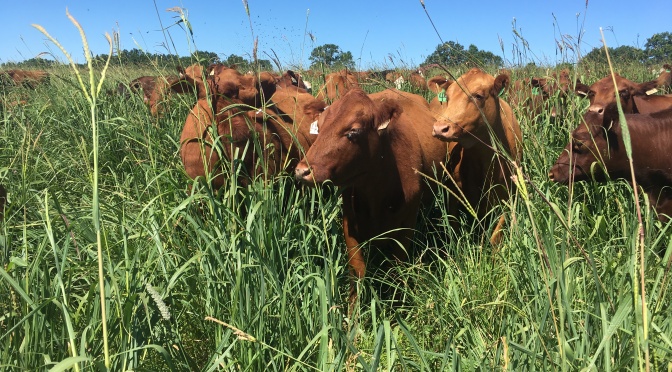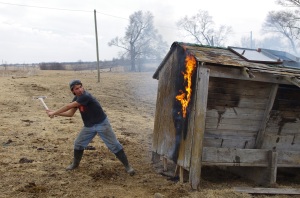Nathan’s Here: Now, following a long delay, it is finally here! I actually held off on publishing this because I couldn’t decide whether I should or not. To be honest, before the week of research I spent before writing this essay I didn’t know very much on the topic of outsourcing. What I did know, however, was that I was very strongly set against it. Now, after that week of research, I still oppose outsourcing, but I have a better understanding of how little I know on the topic. That said, here’s the argument essay I wrote in favorite of “insourcing” jobs back into the United States.
Today more than ever, current and future professionals must face the prospect of their jobs being sent overseas. In 2004, the U.S. Department of Labor and Forrester Research, Inc. estimate that between 2003 and 2015 over 3 million jobs would move offshore (Young). No longer is it only low wage manufacturing jobs that are being threatened, but also white-collar positions, from call center operators to paralegals. As a nation, we must recognize the detriment this “offshoring” trend represents for both our economy and future generations of workers.
With the advent of modern modes of communication, even white-collar jobs previously thought safe from offshoring are being threatened. From call center operators to informational technology jobs, roles which once could only be filled by domestic employees are now being replaced with much cheaper foreign equivalents. And it’s not just jobs that require low skill or education levels that are being moved. Alan S. Blinder, a respected author on the topic of offshoring, comments on the lack of correlation between the required education level of a job and how “offshorable” it is, “… it is easy to offshore working in a call center, typing transcripts, writing computer code, and reading X-rays. The first two require very little education, the last two require quite a lot” (Blinder, par. 14). Even employees who don’t face the offshoring of their positions can find themselves being forced to train foreign replacements being brought in from other countries, often on a temporary work visa such as the H-1B visa, or else forfeit their severance package after their inevitable release (Greenhouse, par. 6).
This trend of white-collar jobs being sent overseas also has severe implications for job seekers. Shortly after the recession of 2008, Don Peck, deputy managing editor for The Atlantic, described the challenge of recovering from the job losses in that period, “Because the population is growing and new people are continually coming into the job market, we need to produce roughly 1.5 million new jobs a year … just to keep from sinking deeper” (Peck, par. 13). This means that Forrester Research’s estimate of 300,000 jobs offshored every year represented 20% of the job growth needed to prevent the recession from getting worse! However, the economy has since recovered, and new jobs are being created, though as Gary Burtless, a labor economist at the Brooking Institution notes, “In a sense, every time someone’s laid off now, they need to start all over. They don’t even know what industry they’ll be in next” (qtd. in Peck, par. 16). The increasing variety of jobs which can be done remotely means that higher education is no longer a cure-all, and that many people who spent time and money obtaining a degree now find themselves out of their chosen career field. Alan Blinder suggests that “the kind of education our young people receive may prove to be more important than how much education they receive” and that “looking forward over the next 25 years, more subtle occupational advice may be needed” (Blinder, pars. 16 & 17). Where once it was common for students to go to college automatically, now students must consider future career options or else they risk joining a pool of terminally unemployed or underemployed career seekers burdened with student loans.
Offshoring jobs also has the dual effect of diminishing the skills of the talent pool in the U.S. and imparting those talents on workers in foreign nations. Persons who find themselves displaced by offshoring can find it difficult to find new work, because as Peck asserts, “As a spell of unemployment lengthens, skills erode … leaving some people unqualified even for work they once did well. This can be made even more difficult by the other effect of offshoring: leveling of the playing field with foreign workers. As jobs and equipment are sent overseas, those nations receiving them become more competitive with their American counterparts.
Proponents of offshoring argue that importing low-wage, low-skill services (sending those jobs overseas and importing the fruits of the labor) allows companies to streamline their services and creates more opportunity for high-wage, high-skill positions. J. Bradford Jensen and Lori G. Kletzer, senior fellows at the Peterson Institute for International Economics, speak of a threshold above which jobs tend to be safe from offshoring, stating “Most employment in tradable service activities is above this threshold and thus most workers in tradable service activities are unlikely to face significant competition from low-wage, labor-abundant countries any time soon” (Jensen and Kletzer, par. 7). They argue that a majority of employees in tradable jobs in the U.S. are above this threshold and hold a “competitive advantage” over comparable employees in those low-wage nations and as such it benefits the economy as a whole to allow those jobs which fall below the threshold to be sent overseas.
While their position is currently true and well-supported, it fails to take into account the trend of higher-wage jobs moving overseas. Blinder describes this trend, saying, “Offshoring is no longer limited to low-end service jobs. Computer code can be written overseas and emailed back to the United States. So can your tax return and lots of legal work …” (Blinder, par. 9). Where offshoring was once limited to basic services, modern communication has allowed more complex work to be completed in other nations. How long before this trend surpasses the “comparative advantage” Jensen and Kletzer say protects U.S. jobs which are already considered tradable?
In an era of globalization, it is impossible to prevent at least some jobs from being sent overseas, but if we hope to avoid losing away our economic status and employment base, we must recognize the damage being dealt to the economy by offshoring and find a way to reverse the trend.
Works Cited
Blinder, Alan S. “Outsourcing: bigger than you thought: the outsourcing wave is about to hit the service sector. To keep good service jobs, we need to prepare the workforce and understand the jobs.” The American Prospect. 17 Nov. 2006: 44+. Opposing Viewpoints in Context. Web. 14 Apr. 2015.
Greenhouse, Steven. “Offshore Outsourcing Will Cost Americans Jobs.” Outsourcing. Ed. David M. Haugen. Detroit: Greenhaven Press, 2009. Opposing Viewpoints. Rpt. From “Offshoring Silicon Valley.” The American Prospect. 19 Jun. 2008: 18-20. Opposing Views in Context. Web. 14 Apr. 2015.
Jensen, J. Bradford, and Lori G. Kletzer. “Offshore Outsourcing Can Favor Some High-Skill Service Providers.” Outsourcing. Ed. Jenny Cromie and Lynn M. Zott. Detroit: Greenhaven Press, 2013. Opposing Viewpoints. Rpt. From “Fear and Offshoring: The Scope and Impact of Imports and Exports of Services.” 2008. Opposing Viewpoints in Context. Web. 15 Apr. 2015.
“Number of U.S. Jobs Moving Offshore.” Free Trade. Ed. Mitchell Young. Detroit: Greenhaven Press, 2009. Opposing Viewpoints. Opposing Viewpoints in Context. Web. 13 Apr. 2015.
Peck, Don. “The Recession Has Caused the Highest Rate of Unemployment Since the Great Depression.” Jobs in America. Ed. Debra A. Miller. Detroit: Greenhaven Press, 2011. Current Controversies. Rpt. From “How a New Jobless Era Will Transform America.” The Atlantic. Mar. 2010. Opposing Viewpoints in Context. Web. 15 Apr. 2015.












